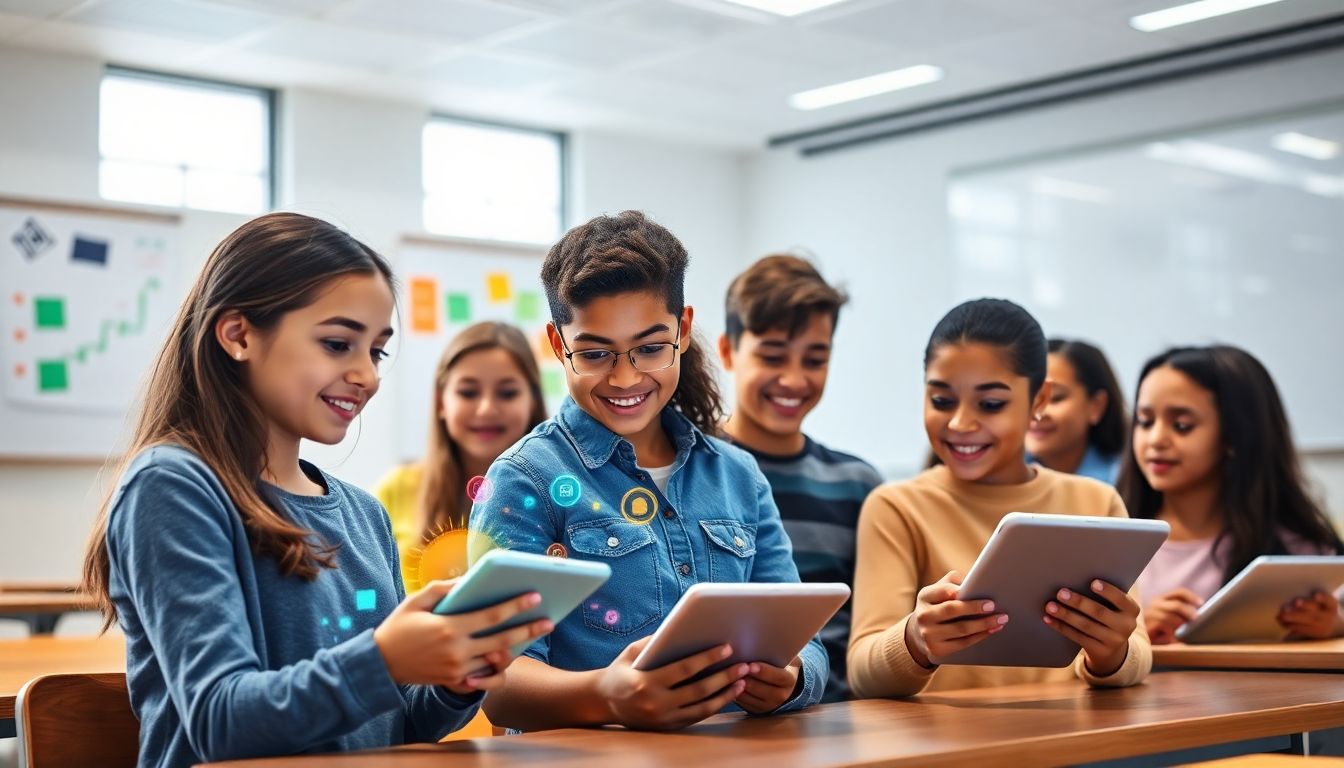- Get link
- X
- Other Apps
- Get link
- X
- Other Apps

Engagement among students has dipped significantly, with reports showing that nearly 70% of U.S. students feel bored in class. With this decline, educators are turning to new methods to revive interest. One of the most effective approaches is gamification—a strategy that applies game design elements in non-game contexts. Gamification works by tapping into our natural love for competition, reward, and achievement. Gamification transforms traditional learning by integrating game mechanics to boost engagement, motivation, and knowledge retention.
The Power of Gamification in Education: Why It Works
Increased Engagement and Motivation
Gamification increases student engagement by using elements like points, badges, and leaderboards. These features appeal to our intrinsic desire to achieve and compete. A study showed that incorporating gamification can improve student motivation by up to 60%. When students see their progress and compare it with peers, they are more likely to participate actively.
Enhanced Knowledge Retention
Gamified learning encourages techniques such as active recall and spaced repetition. These methods have been shown to enhance memory retention significantly. Research indicates that learners remember 80% of what they actively recall, compared to only 20% of what they passively learn. By integrating quizzes and challenges, gamification makes recalling information more dynamic and effective.
Fostering a Growth Mindset
Gamification creates a safe space for mistakes, promoting a growth mindset. Instead of fearing failure, students view it as an opportunity to learn. A notable example is Classcraft, a platform where students can create characters and embark on quests. When students fail at a challenge, they can retry, fostering resilience and a positive attitude toward learning.
Types of Gamification Techniques in Education
Points, Badges, and Leaderboards
These reward systems motivate learners by offering tangible rewards for achievements. Points track progress, badges represent accomplishments, and leaderboards create a sense of community and competition. Duolingo is a prime example, using a leaderboard system to motivate language learners, resulting in millions of active users.
Challenges, Quests, and Storytelling
Narrative-driven learning enhances engagement by immersing students in stories. When students complete quests or face challenges, they feel a deeper connection to the material. For instance, in a history class, students might take on roles of historical figures, solving problems they faced. This approach not only makes learning enjoyable but also memorable.
Progress Bars and Visualizations
Visual representations of progress help students understand how far they've come. Research indicates that learners are 50% more likely to complete tasks when they can see their progress. Progress bars visually track achievements, encouraging students to stay motivated as they work towards their goals.
Real-World Examples of Successful Gamification in Education
Case Study 1: Classcraft
Classcraft is a classroom management system using gamification principles to enhance student engagement. Teachers can create challenges that align with their curriculum, rewarding students with points and badges as they complete tasks. In a recent study, teachers reported a 60% increase in student participation and a 50% improvement in homework completion rates. "Gamifying my classroom changed how my students approached learning," says a participating educator.
Case Study 2: Kahoot!
Kahoot! is an interactive game-based platform that allows teachers to create fun quizzes for students. In one high school study, usage of Kahoot! resulted in a 30% increase in test scores. The interactive nature of the quizzes, including immediate feedback and competition, keeps students excited about learning.
Case Study 3: Codecademy
Codecademy uses gamification to teach coding skills through an interactive learning approach. Users earn badges and points as they progress through courses. This method has led to a 200% increase in course completion rates. By making the learning process fun, students are encouraged to continue their education.
Creating Effective Gamified Learning Experiences: Practical Tips
Align Game Mechanics with Learning Objectives
It's crucial to ensure that the game elements directly support learning goals. By aligning these components, educators can create a cohesive learning experience that maximizes engagement and retention.
Consider Learner Demographics and Preferences
Tailoring gamification strategies to specific audiences is vital. Understanding learners' interests and needs leads to more effective engagements. For instance, younger students may respond well to colorful visuals, while adults might prefer practical challenges.
Start Small and Iterate
Implementing gamification doesn't have to happen all at once. Starting with small initiatives can help educators gather feedback, refine strategies, and expand gradually. This phased approach allows educators to tailor their efforts based on actual student responses.
Conclusion: The Future of Gamified Learning
Gamification offers numerous benefits in education, including improved engagement, knowledge retention, and a positive learning environment. Carefully designing and implementing these experiences is imperative for success. As we continue to explore gamification's impact on learning, the future promises to be bright. Educators must embrace these tools to create engaging educational environments that foster continuous learning. Explore gamification further and see how it can transform the way we learn!
Comments
Post a Comment